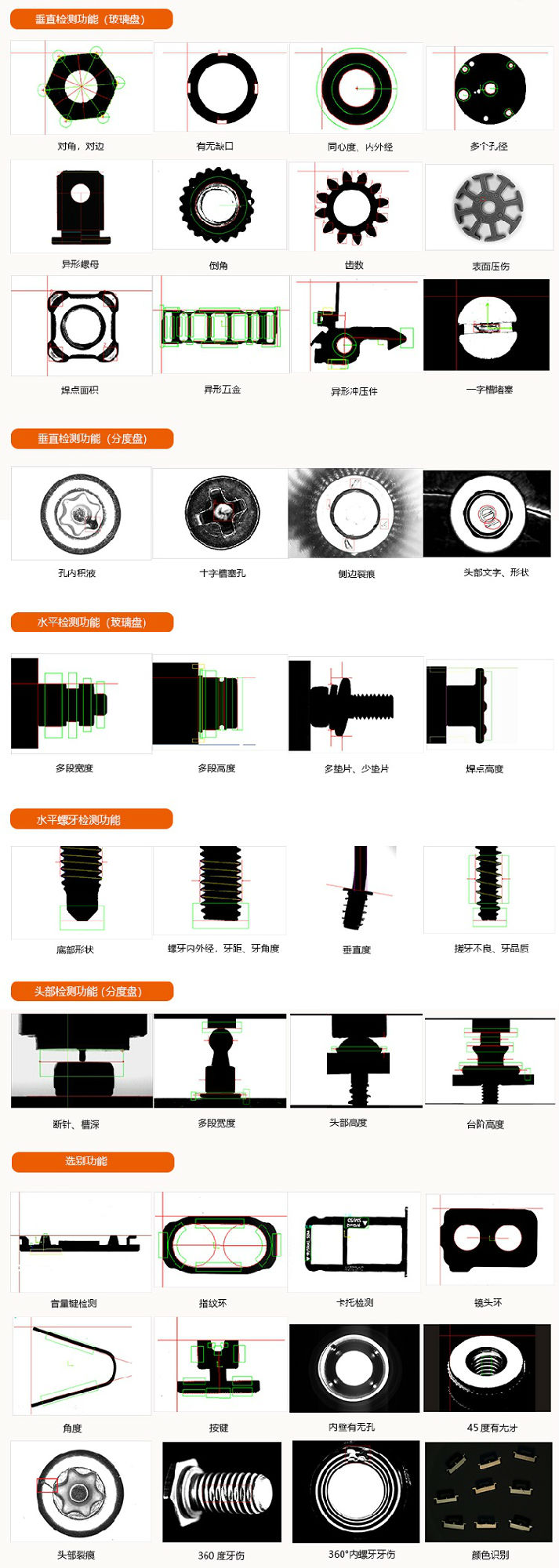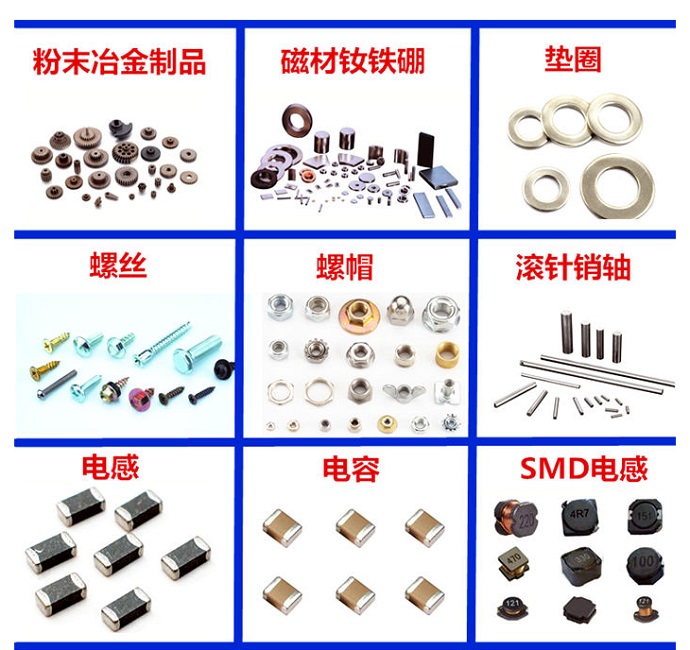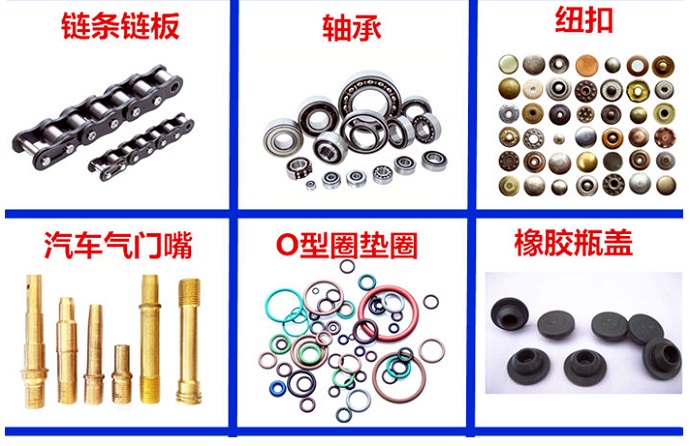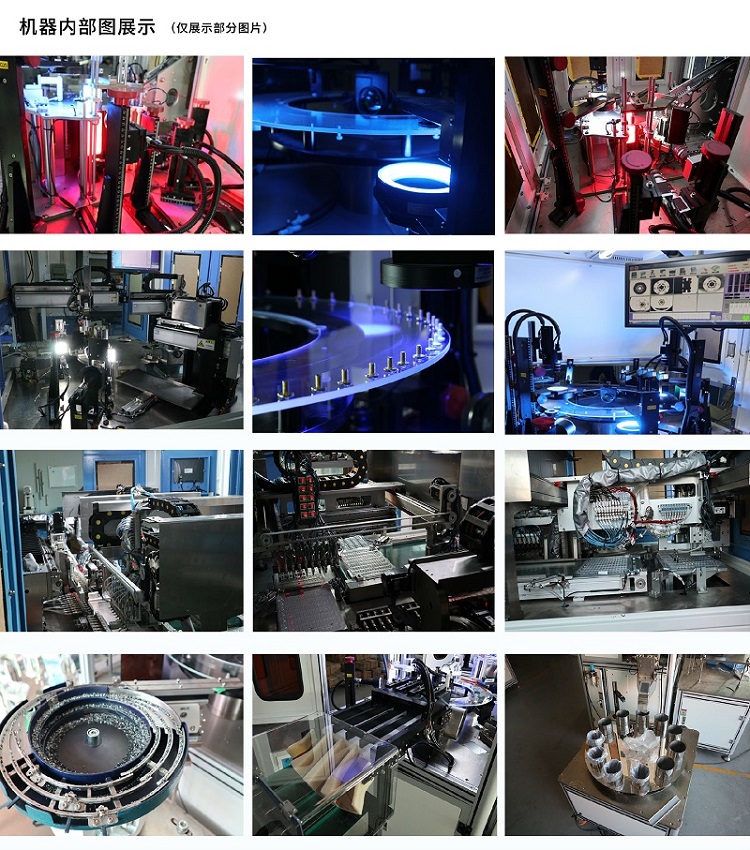Products&Services
Product details
Product appearance defect detection belongs to a type of machine vision technology, which utilizes the function of machine vision to simulate human vision. CCD industrial cameras are used instead of human eye detection to collect and process images from specific physical objects, calculate them, and ultimately conduct actual detection, control, and application.
The various defects and defects on the surface of the product inevitably differ in optical characteristics from the product itself. When light enters the surface of the product, various defects and defects will exhibit different anomalies in reflection, refraction, and other aspects compared to the surrounding area. For example, when uniform light is vertically incident on the surface of a product, if there are no defects on the surface, the direction of emission will not change, and the detected light is also uniform; When the product surface contains defects, the emitted light will change, and the detected image will also change accordingly. Due to the presence of defects, stress concentration and deformation occur around them, making it easy to observe in the image. If light transmission defects (such as cracks, bubbles, etc.) are encountered, the light will refract at the defect location, and the intensity of the light will be greater than that of the surrounding area. Therefore, the light detected on the camera target surface will also be correspondingly enhanced; If light absorbing impurities such as sand are encountered, the light at the defect location will become weaker, and the light detected on the camera target surface will be weaker than the surrounding light. By analyzing the intensity changes and image features of the image signal collected by the camera, corresponding defect information can be obtained.
Common surface defects of product appearance include scratches, holes, spots on metal surfaces, inclusions, damages, stains on non-metallic surfaces, color differences, indentations on paper surfaces, glass, etc. Generally speaking, surface defects are areas where physical and chemical unevenness occurs locally in the product.
1. Detect surface wrinkles, residue, scratches, bumps, dirt, etc. on IntelCPU film chips;
2. The inspection of product appearance defects, including migration, precipitation, frost, discoloration, impurities, pollutants, etc., can be carried out to distinguish unknown objects, including unknown powders, unknown liquids, unknown particles, etc;
3. Inspect the surface of the product for scratches, damages, defects, particles, oil stains, dust, cracks, injection molded parts for missing corners, correct packaging, printing errors, and so on.

Mobile phone cases, hand parts, automotive fasteners, screws and nuts, magnetic cores, cylinders, powder metallurgy, connectors, capacitors, inductors, springs, plastic products, rubber products, hardware, wire pressing frames, conductive sheets, bearings, bottle caps, buttons, washers, rolling needles, pins, etc.


1. Fully inspect at maximum production speed;
2. Accurate, real-time, and reliable information;
3. The operation is simple and convenient, and defect detection can be carried out without deep learning;
4. High speed cameras and processing technology can quickly detect, classify, display, and eliminate defects;
5. Excellent optical equipment for detecting scarce defects, even low contrast defects;
6. Intelligent classification software: Defects and defects are accurately classified into various directories based on their source.
Appearance defect detection equipment, also known as appearance defect detection machine, generally speaking, its price is not fixed. According to customer needs, equipment functions can be added or reduced, and the price generally ranges from 100000 to 200000 yuan. Customized appearance defect detection equipment may have a higher price depending on customer detection needs.
1. Equipped with automatic sorting and marking function for defective products;
2. Real time monitoring of product appearance quality can be achieved;
3. The maximum detection accuracy can reach 0.01mm;
4. Capable of automatically identifying surface defect features ranging from 0.1mm to 1mm;
5. The detection speed is synchronized with the production line.

The biggest role of appearance defect detection is to play a role in quality assurance, product control, equipment monitoring, and brand enhancement, helping enterprises conduct round-the-clock quality inspection. It can detect periodic anomalies and random defects, avoiding the loss and variation of artificial visual inspection; Appearance defect detection can provide complete health management reports and statistical data, which can serve as a basis for product classification and warehouse management.
The application of appearance defect detection equipment is becoming increasingly widespread in industries, such as electronics, hardware, plastics, automobiles, mobile phones, packaging, food, aerospace, medical and other fields.
Nowadays, consumers of consumer electronics, precision hardware, plastic products, and more are looking forward to seeing flawless products when unpacking. Products with scratches, unevenness, and other defects in their appearance can result in expensive returns and may also damage brand reputation and the future business of the enterprise.
In the past, traditional manual inspection methods were used to detect product appearance defects. However, with the acceleration of industrial automation and the vigorous development of industrial manufacturing, the faster the production line speed, the more complex the product, or the more blurred the defects, the more difficult it is for manual inspectors to meet production efficiency requirements while providing absolute quality assurance.
